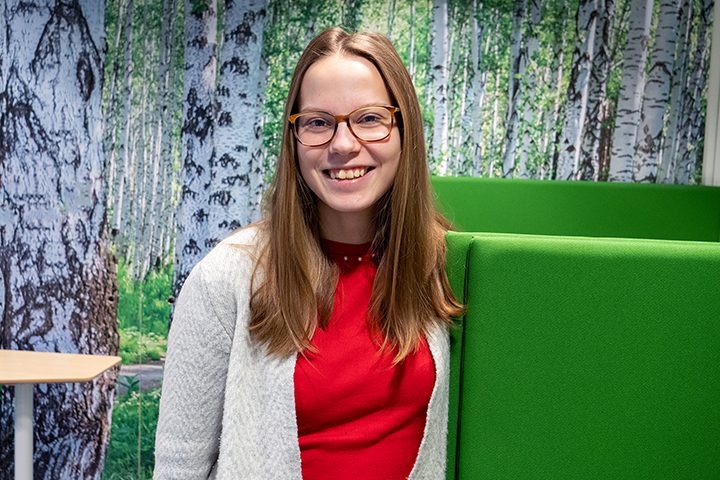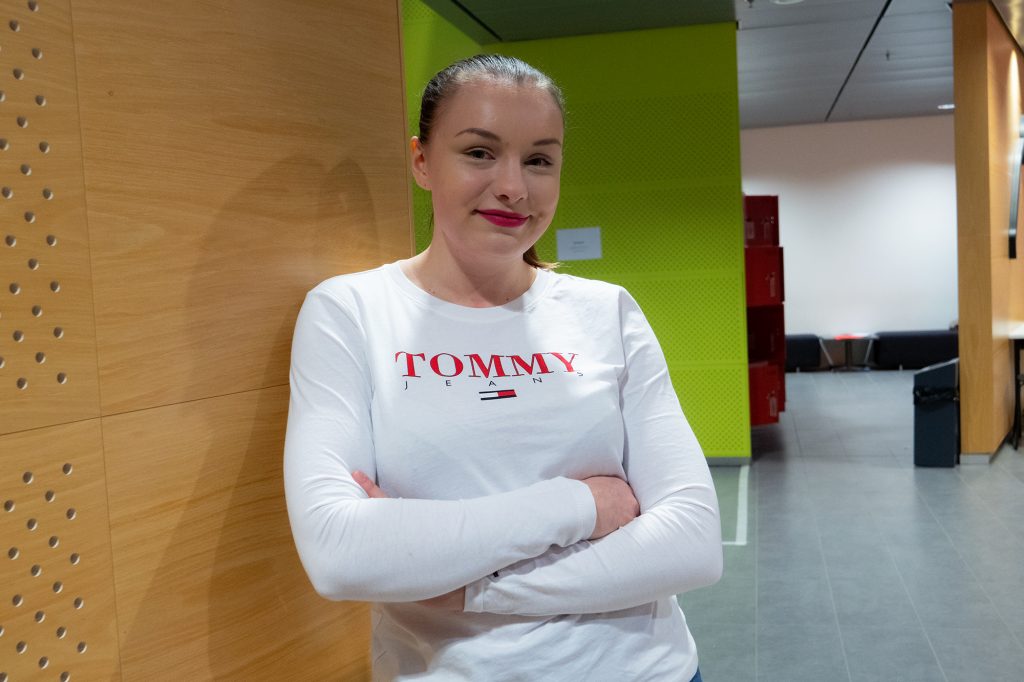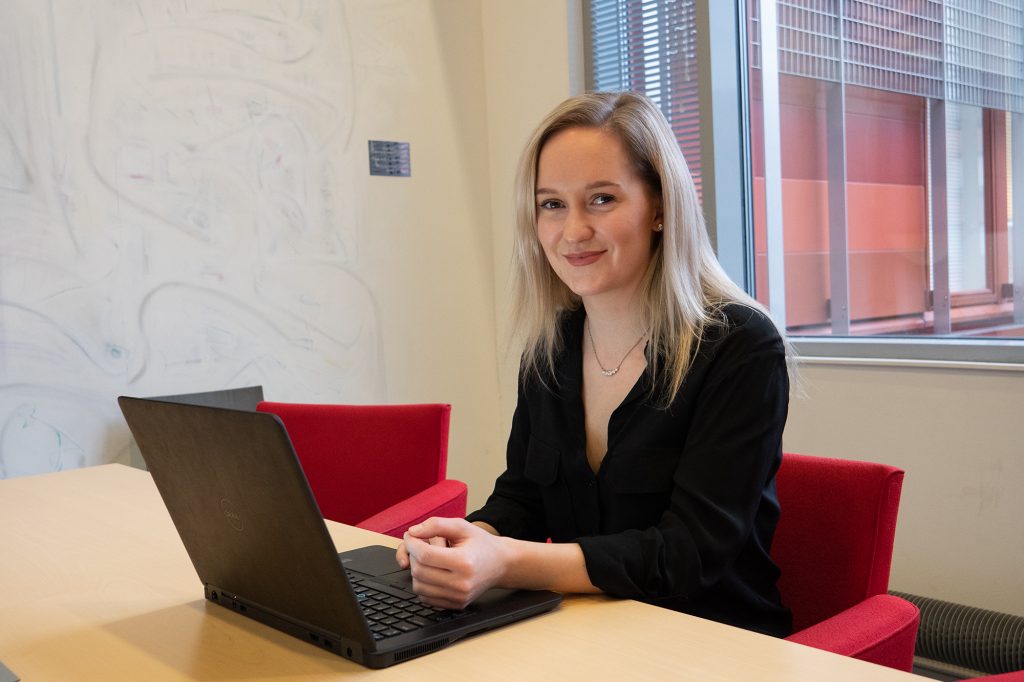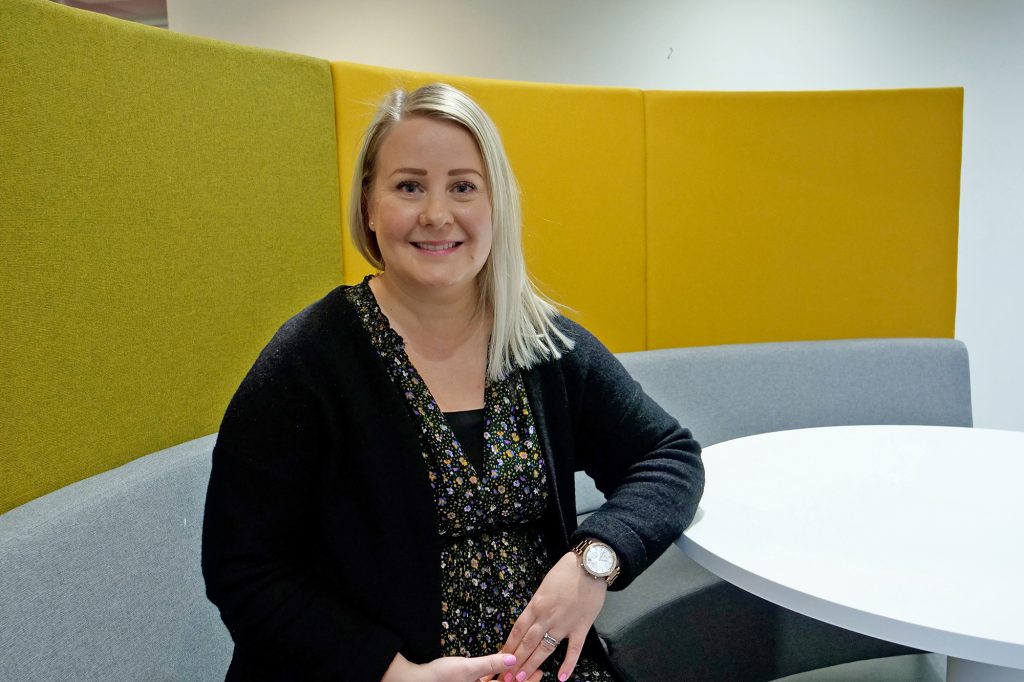Water scarcity is one of the fastest-growing global crises and threating the lives of millions. Many drought-stricken areas have no…
Tekijät | Authors

From initial confusion to inspiration – learning working life skills in project hatcheries
Like jumping in at the deep end. That may be how participants of the project hatchery course at Turku University of Applied Sciences feel in their first semester. Students Aino Virtanen and Iina Niinivaara found the course helpful for finding employment and developing their confidence, professional competence and organizational skills.
In their freshman year, the students of the Engineering and Business sector at Turku University of Applied Sciences attend the project hatchery course. The course is quite large as it is attended by all freshmen, in other words about 1,300 students. The students are divided into multidisciplinary groups of 10+ students, and each group is given a topic for a project. A typical group consists of students from various fields, from Mechanical Engineering to Professional Sales, and each group completes its project during the autumn.
Aino Virtanen, 22, had heard stories about the project hatchery course even before starting her Industrial Management Engineering studies at Turku University of Applied Sciences.
− The feedback I heard wasn’t great. Many students found it surprisingly difficult to work in a multidisciplinary group. Many were also disappointed when their topic did not match their field of study. I was also skeptical about my group’s topic: organizing a recruitment event, says Virtanen.
After the initial confusion, the students realized the actual point of the course; the focus is not on the project or its topic but on learning how to work in a multidisciplinary group, as people usually do in working life, and developing fundamental skills needed in project work. In the project hatchery, the students practise establishing functional teamwork to reach a shared goal and learn what it means to assume the role of an independent learner. At the same time, they learn the ways of studying at Turku University of Applied Sciences.
− Sure, it’s confusing to dive right into a project with a bunch of strangers in your freshman year. But I found it a good thing to experience this course at the beginning when everything is new anyway. At that point, no one will have had time to form any cliques with students from their own field, and the course also provides basic project management skills for future studies, says Virtanen.

Aino Virtanen feels that project hatcheries help students find employment.
Virtanen feels that networking with students from different fields was one of the greatest benefits of the course. She became friends with some of her student colleagues and even found a boyfriend in the project hatchery.
− During the course, I learned many things about myself. In the hatchery, you learn to tolerate people’s different ways of working. You learn that you can’t get annoyed at someone for doing things differently. That’s how it goes in real working life; you have to work with different people, says Virtanen.
At the end of autumn, Virtanen realized how much she had enjoyed the course. Even though her group’s project did not work out, it did not matter; pulling off a successful project was not the main goal of the course.
− People are allowed to fail in the project hatcheries. It’s a safe place to make blunders, and the experience itself is valuable regardless of whether the project is a success. We handled the failure as a team and discussed what we could have done differently. You learn from your mistakes.
Virtanen wants to point out that, in the end, working in a project hatchery is fun as nearly each group faces a mistake that they can later laugh at together.
What matters is the journey
Senior Lecturer and Research Group Leader Meiju Keinänen has worked with project hatcheries for a long time. According to her, what matters is the journey you take during the course. Some realize the benefits of the project hatchery quite quickly, whereas others may not understand the importance of the course until afterwards. Students’ creativity, ability to take initiative, critical thinking and networking skills are increased by two important factors: the learning path and insights.
− Learning teamwork and networking skills, for example, takes time. It’s also difficult to identify the learning process and results of such skills. Nevertheless, they are key skills that are highly sought after in working life and the students may not have a second chance to develop them during their studies, says Keinänen.
− Some only realize afterwards that the annoying course in their freshman year was actually the most important in terms of working life, she adds.
Business Logistics student Iina Niinivaara, 22, agrees.

Iina Niinivaara found professional pride and competitive strength for working life in project hatchery work.
− Oh, I didn’t like the course at all back then! I was anxious about the unknown. I found it so strange that there might not be a clear operational model and goal for managing our project. It took me a long time to understand that the project we did was only our own proposal for ways of managing the project, says Niinivaara.
Even though Niinivaara initially felt negative about the course, she had no idea how much it would affect her – in a good sense. In the project hatchery course, Niinivaara overcame her stage fright and grew from a very shy person to a determined organizer.
− The course also includes making presentations in front of others, which was my biggest fear. Throughout the autumn, I was nervous about the final presentation where I’d have to speak in front of everyone in a huge auditorium. I can’t remember anything about my performance, but getting through it gave me so much confidence that had really helped me in my subsequent presentations. Now, I’d be perfectly able to step into an auditorium and talk for two hours straight, she says with a laugh.
Even if the project fails, it doesn’t mean that your learning does.
Niinivaara describes the operational model of the project hatchery course as a cultural shock that completely transforms your thinking.
− A project hatchery is a safe environment for practising and experiencing even the most unpleasant feelings. Even if the project fails, it doesn’t mean that your learning does, she says.
Niinivaara’s group did well with their project. Their task was to raise awareness of chemicals entering waterways in private use.

The goals of the project hatchery course include learning ways of working. Archive footage.
Learning about yourself
Both Iina Niinivaara and Aino Virtanen consider the project hatchery course a pivotal moment in their study path. Elina Asukas felt the same in her Professional Sales studies at Turku University of Applied Sciences. After the first course, each of the three students went on to become a group supervisor for the project hatcheries and, subsequently, a student teacher.
Elina Asukas was so inspired by the project hatcheries that she was determined to become a group supervisor. The supervisors are sophomores who support the project hatchery groups. Supervisors check attendance, give tips when the groups face problems and report group activities to the teacher. Asukas feels that acting as a group supervisor for the project hatchery was the best course in all of her studies.
− You learn so much about yourself. How you respond to certain situations, how you give and receive feedback. When supporting a group, positivity goes a long way, says Asukas.
Positivity goes a long way.
The hatchery participants make all the project-related decisions. The group supervisor only gives advice and options for different directions.
A student who has acted as a group supervisor may enquire after a chance to act as a student teacher for the hatchery course during their third year of studies. This task means even more responsibility.
Recently graduated, Asukas now works as an administrative assistant for project hatcheries. Her duties include planning the practical side of the course and helping to coach new group supervisors.
− I really like this concept. I enjoy witnessing different types of people from different fields working on a practical project together. The project means more than superficial work; you get to interact with people on a deeper level, says Asukas.

Elina Asukas says that the learning path is the most important element in project hatcheries.
Benefits for finding employment
At its best, the project hatchery course also helps students find work. Aino Virtanen and Iina Niinivaara found permanent jobs before graduating. Virtanen is a structural engineer and Niinivaara a sales engineer.
− Whenever I had job interviews, I noticed that employers were interested in project hatcheries. They kept asking about it and I realized that employers appreciate jobseekers who know how to work in a team, says Virtanen.
Niinivaara had similar experiences. She believes that her study background may be why she has been given responsibility and employers have trusted her skills.
Employers appreciate jobseekers who know how to work in a team.
− The topic came up at work when I wanted to continue as a student teacher in project hatcheries alongside my job. The people at work know that I’ve played an important role at school and that I’m committed to what I’m doing. I feel like that has had a positive impact.
She is now working on a thesis on the project hatchery concept and students’ thoughts and experiences of the course. Niinivaara finds that the study path from project hatcheries to a student teacher has made her more confident and boosted her professional pride as well as her competitive strength in working life. According to Niinivaara, knowing that you are able to organize large groups of people is an asset in and of itself. Moreover, both Niinivaara and Virtanen feel that they learned to organize and plan their work in a linear fashion.
What advice would Niinivaara give to freshmen starting their own project hatcheries in the autumn?
− The only way to grow is to go out of your comfort zone. You can make the discomfort zone your new comfort zone, she says.
Doubling the hatchery groups
The project hatchery group of Turku University of Applied Sciences stems from the year 2008 and the Sepänkatu campus. The concept has been developed year by year. In the development work, some of the responsibility has been shifted from the teachers to the group supervisors and attention has been paid to clarifying the goals of the course for the students.
Last year, the project hatchery operations were expanded from the Sepänkatu campus to ICT-City and Lemminkäisenkatu. The project hatcheries have previously been attended by about 600 students, but last year, for the first time, the course was attended by nearly 1,300 students. The change is immense and the number of hatchery groups has practically been doubled. Next autumn, the goal is to form 100 hatchery groups.
The topics for the project hatcheries come from in-house research groups, in other words the so-called RDI (Research, Development and Innovation) projects. As the topics given to the groups are broad and general, the students do not need to possess any field-specific expertise yet. This makes each student equal.
− The goals of the course are explained to the project hatchery groups, but each student still needs to personally realize the benefits of the course, says Senior Lecturer Meiju Keinänen.

Meiju Keinänen leads the Practice-based pedagogy research group that launched at the beginning of the year.
In the projects, each group is given free rein. The group supervisor and the teacher provide support. The project hatcheries also include a theoretical section where students form study circles.
The project hatchery course of Turku University of Applied Sciences is an innovation pedagogy method. Innovation pedagogy is a learning approach utilizing a new way of understanding, producing and using information to generate innovative professional skills.
Why is innovation important?
− The world we live in requires innovation. We are living in an era of climate crisis and ageing baby boomers. Businesses are trying to keep up with constant change and competition. Innovation is the only solution to these problems. Global challenges need a multidisciplinarity approach and a different way of working, says Keinänen.
Continuous learning is hugely important as students must be ready to tackle future work that we cannot even predict yet. Preparedness for change includes the ability to work with different people and manage tasks as project-like entities.
− Educational institutions rarely focus on such skills. At Turku University of Applied Sciences, the learning environment and all of our studies have been built in line with innovation pedagogy. The project hatcheries are a quick way to learn our ways of working.
A new feature is the third-year Capstone course attended by all the Engineering and Business students. In this course, the tasks given to the project groups come directly from businesses.
Images: Mari Loikkanen and Martti Komulainen








